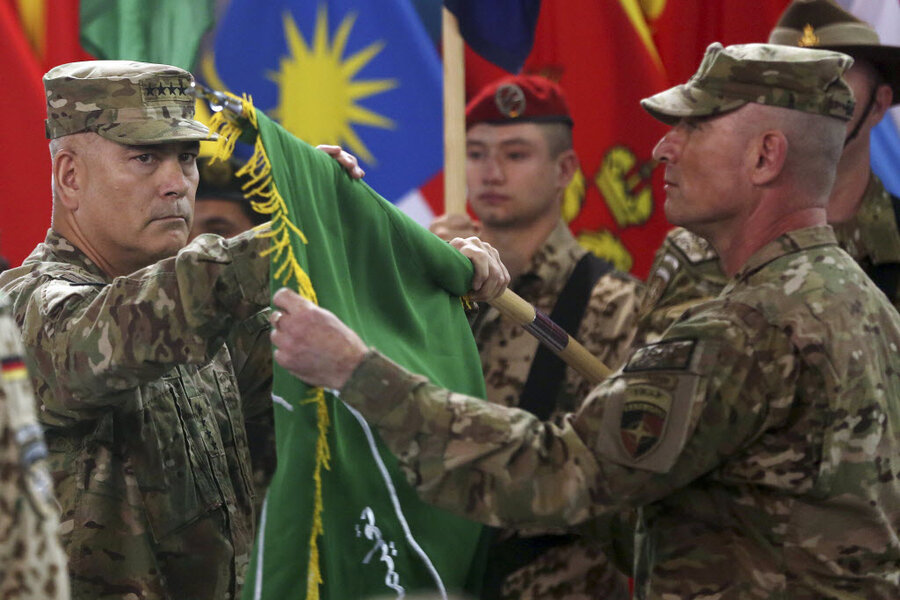War in Afghanistan officially over. Does that mean end of fighting for US?
Loading...
| Washington
The US military officially ended its combat operations in Afghanistan in a small Sunday ceremony that made it clear that NATO was not interested in calling a great deal of attention to the occasion.
With the new name of Operation Freedom’s Sentinel – it’s no longer Operation Enduring Freedom – the ongoing military campaign will now consist of some 13,000 service members, most of them US troops.
“For more than 13 years, ever since nearly 3,000 innocent lives were taken from us on 9/11, our nation has been at war in Afghanistan,” President Obama said in a statement. Now, he said, “our combat mission in Afghanistan is ending, and the longest war in American history is coming to a responsible conclusion.”
But will this milestone marker in America’s longest war actually mean that US troops will be fighting less?
Mr. Obama acknowledged that Afghanistan “remains a dangerous place.”
For this reason, the United States “will pursue two missions” in the country going forward, Defense Secretary Chuck Hagel said in a statement Sunday.
Job No. 1 will be “advising, assisting, and training” Afghan soldiers and police.
The other mission will be “counterterrorism” operations “against the remnants of Al Qaeda to ensure that Afghanistan is never again used to stage attacks against our homeland,” Secretary Hagel said.
Still, US military officials have struggled to clarify what the “counterterrorism” mission will entail. “We won’t target Taliban for the sake – just merely for the sake – of the fact that they’re Taliban and quote unquote belligerents,” Rear Adm. John Kirby, Pentagon press secretary, said in November. But “should members of the Taliban decide to threaten American troops or specifically target and threaten our Afghan partners in a tactical situation, we’re going to reserve the right to take action as needed.”
It is also unclear how the Pentagon will define “threatening” actions that would allow US troops to attack.
The counterterrorism mission ensures that “the official end of combat operations does not mean the end of combat,” says Christopher Swift, adjunct professor of National Security Studies at Georgetown University’s School of Foreign Service in Washington.
This will primarily be the purview of US Special Operations Forces, “who will continue to be engaged in operations against defined targets.”
“So if I were a member of the Taliban senior operational leadership, I’d expect to be dealing with US forces,” he adds. “If I’m mid-level, I’d expect to be fighting against Afghan security forces.”
The Taliban declared its “defeat” of US forces on the heels of the Sunday ceremony, vowing to continue fighting. The International Security Assistance Force (ISAF) “rolled up its flag in an atmosphere of failure and disappointment without having achieved anything substantial or tangible,” a Taliban spokesman said in a statement.
More US troops – roughly 1,000 of them – than originally planned will remain in Afghanistan in 2015. These forces had been scheduled to leave the country this year. There are currently some 10,000 US troops in Afghanistan.
More than 2,200 US service members have died in the country, where US taxpayers have spent more than $1 trillion on the war, in addition to $100 billion to help rebuild the nation.






